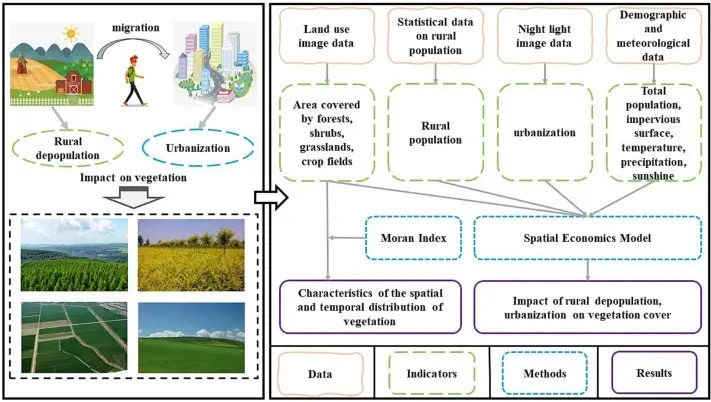How is Urbanization Impacting Rural Areas? Negative and Positive Impacts

Urbanization is changing the world quickly, and most people migrate from rural to urban areas to find better opportunities, enhanced living conditions, and access to services. These dramatic changes are facing urban and rural areas. According to the United Nations, over 56% of the world’s population now lives in urban areas. In the coming years, the number is expected to rise significantly.
While more attention is focused on increasing the growth of cities, the impact of this urban expansion on rural areas is equally profound. Rural areas are facing a labor shortage and population decline due to changes in environmental pressure and traditional lifestyle. These events are not isolated; they have an impact on the food system, infrastructure planning, and national economies.
Need to understand “how urbanisation is impacting rural areas” for researchers and residents. As urban areas continue to develop, rural areas also must be included in a balanced and sustainable development strategy that is beneficial for all. Rural areas are left behind.
What Is Urbanization?
Urbanization is the process that has been defined as an increase in the number of people living in towns and cities as against to rural areas. Urbanization also implies, along with the physically growing urban areas, some major shifts in the ways human beings live with and through nature and work.
An increase in the departure of people from rural areas and their entry into cities will lead to the expansion of cities. Simultaneously, new towns will pop up, and the use of land changes, thereby having an impact on human life and their economy. Urbanization is happening all over the world, especially in developing countries, the reason of more factories, businesses, and global connections.
How is urbanization Impacting Rural areas?
Urbanization has both impacts on rural areas. Here are some major key points that are reshaping the rural landscape:
Positive Impacts:
1. Higher connectivity
Urbanization can lead to enhanced transportation and communication infrastructure in rural areas. facilitation of access to information, marketers, and other services.
2. Financial prospects
Because of urbanization, such urban communities may have new sets of economic opportunities for which agricultural products or tourism and other rural services may be demanded.
3. Access to services and resources
Urbanization provide other essential services like healthcare, and education in rural areas.
Negative impacts:
1. Population Decline
One of the most noticeable changes is that many younger people leave the countryside to live and work in cities. This may cause some impacts like:
- Lack of labour shortages in local industries and agriculture
- Aging rural populations
- Decline in health services and school enrollments
2. Social and Economic Inequalities
The advancement of urbanization, in fact, tends to make a bigger gap between urban and rural areas with respect to development. With respect to resources, services, hospitals, and connectivity, the rural populace cannot be compared with those who are located in the city.
3. Effect on livelihood in rural areas
When people leave villages to move to cities, it can decrease the population in rural areas, particularly in farming areas. Changes in resource availability and land use may also have an impact on rural areas and cultural traditions.
Do Most People in Latin America Live in Urban Areas?
Most people in Latin America live in urban Areas, and Latin America is the world's most urbanized region. 80% population of Latin America lives in towns and cities. Countries such as Argentina, Chile, and Brazil have a higher number.
This big move to urban areas has brought both good and bad results. Cities have grown and created more new jobs, but many rural areas are now being left behind. Small farms and towns may get weak support and resources. That’ why urbanization is impacting rural life, essentially because of this.
Urbanization Philippines Work
The Philippines is growing rapidly in terms of urban development.Urbanization in the Philippines is strongly linked to job migration.
Many rural residents move to other urban cities such as Metro Manila, Davao, and Cebu to find work. Most of these jobs are in:
- Retail and service jobs
- Factory and construction work
These services are the source of income for many people, although the wages are very low and yet not stable. At once, rural areas lose their workers, which makes it harder to run local businesses and farms.